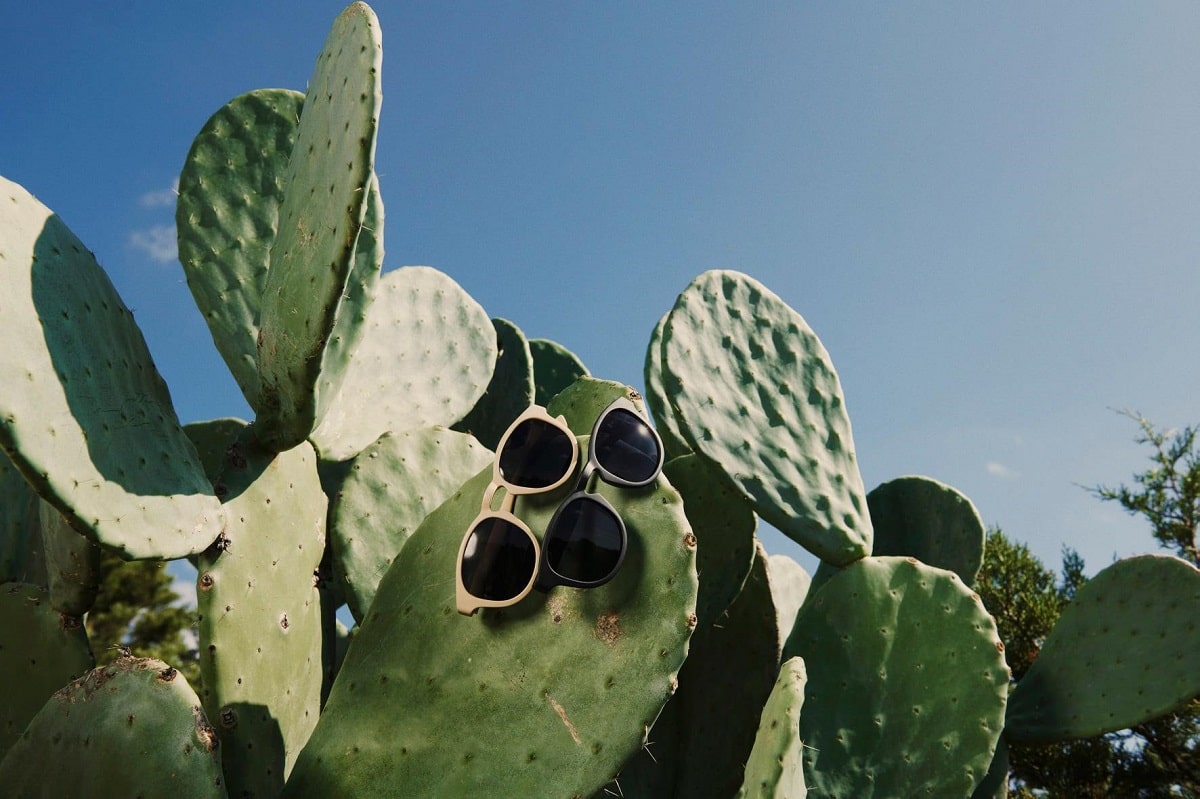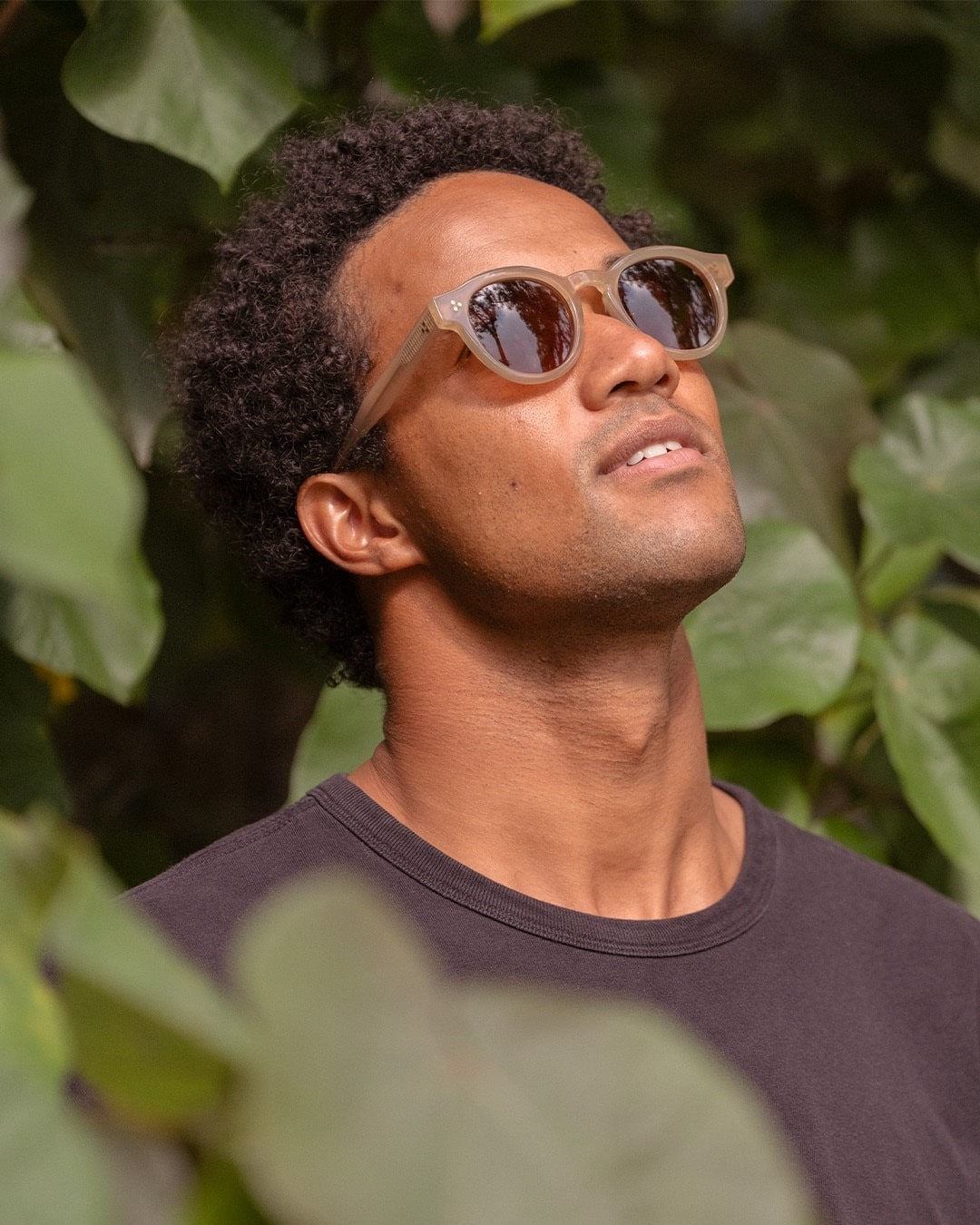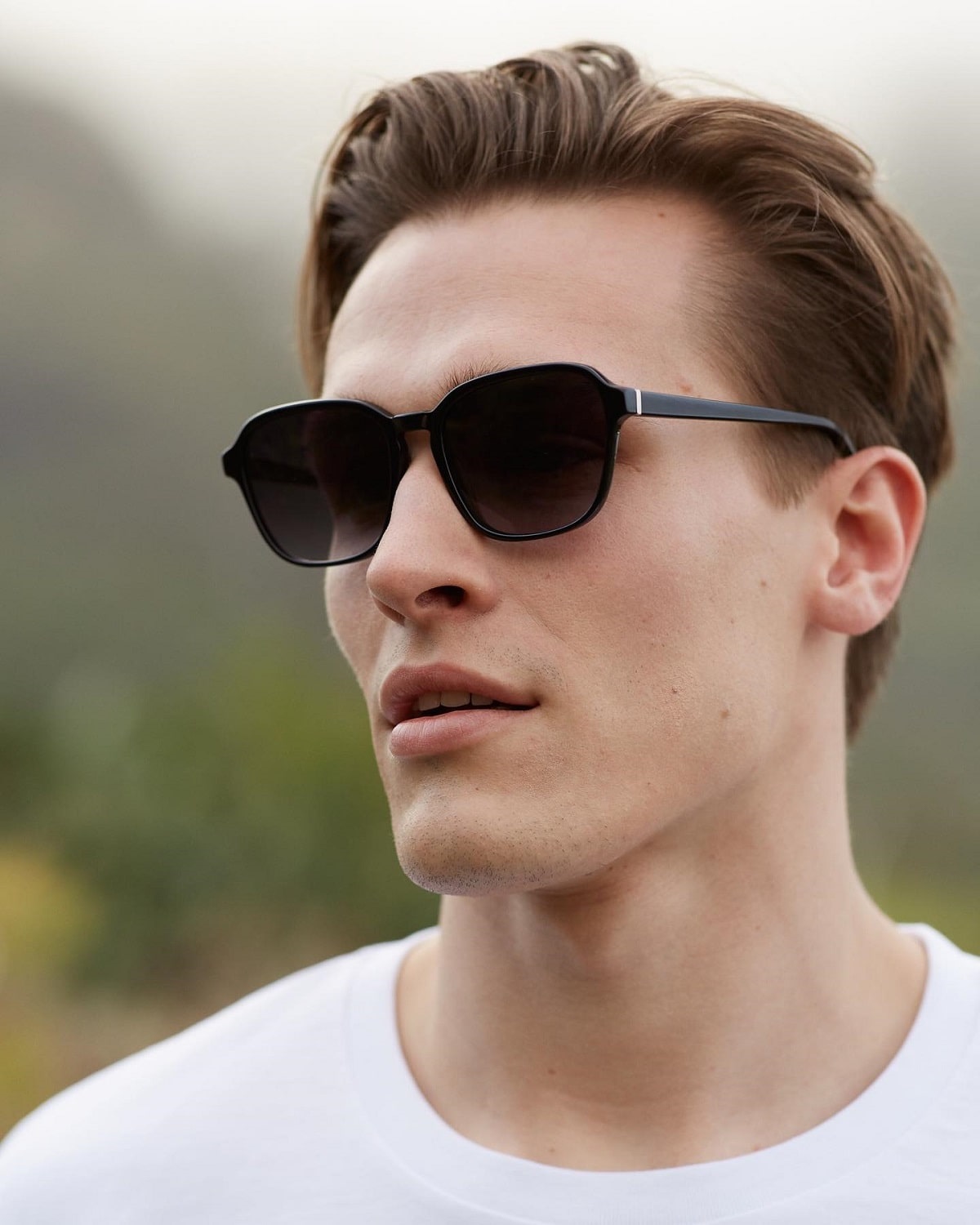1
HOME > Business >
HOW THE SUNGLASSES INDUSTRY CAN BECOME MORE SUSTAINABLE
Written by Ivan Yaskey in Business on the 7th July 2023

Notice the sun from your window? You grab a pair of sunglasses before you head outdoors – partially to tame the brightness and glare as you drive and partially to protect your eyes from exposure to damaging UVA and UVB rays. At the same time, the style-conscious among us select a face-flattering frame and often own multiple pairs. Yet, as with all petroleum-based products, a visible environmental impact accompanies sunglasses, no matter if you go for a premium brand or grab a plastic pair at the closest convenience store. Brands using bio-based or recycled materials have started cropping up in response:
The Environmental Impact of Sunglasses
From the 19th century until as recent as the 1990s, the shells of hawksbill sea turtles were used for sunglasses frames, as well as for eyeglasses and hair accessories. To continue creating these products without forcing the species toward extinction, acetate – a plant-based plastic – was introduced during the first half of the 20th century and largely replaced turtle shells by the 1950s. Concept wise, cellulose acetate appeared as a win-win, resulting in a partial synthetic product rich in color and ripe for design possibilities – which eventually included jewelry, various home goods, and cigarette filters. For sunglasses, its durability far surpasses that of injection-molded plastic frames – a staple of fast-fashion brands – and the material can be heated to fit your face more precisely. Especially for everyday wear, this attribute, along with its hypoallergenic composition, is another asset. Yet, the production behind acetate is deceptive: While cellulose is an ingredient, this semi-synthetic material undergoes a chemically intensive process involving acetic acid, or vinegar, acetic anhydride, and sulfuric acid – a substance that poses a threat to human health and safety in high concentrations. Similar to rayon or viscose, the final product involves a mixture of dissolved plant fibers with petroleum-based sources, plus UV stabilizers and plasticizers like phthalates.

In turn, the impact of cellulose acetate is mixed:
- Research has shown that the cellulose in acetate gradually biodegrades – anywhere from under two to over 10 years – based on where and how the material gets discarded. Due to this disparity, traditional acetate has yet to receive certification as a biodegradable material.
- Plasticizers, just as with other plastic-based products, are known as hormone disrupters and come with cancer risks.
- Acetate tends to break down in water-based environments: However, this process releases the petroleum-based substances and chemicals involved in its production.
Other factors playing a role in sunglasses’ environmental impact are:
- The lenses: Unless you’re purchasing glass, some type of plastic makes up the lenses for your sunglasses. In manufacturing and production, lenses generate small shavings that quickly add up and later get discarded in a landfill environment. Most of the time, these cheap lenses break quickly and get discarded.
- Metal: While metal sunglasses typically have a smaller carbon footprint than an acetate-based frame, mining and production aren’t clean processes. Titanium particularly can release chlorine gas and sulfuric acid into the environment.
- Manufacturing and lifespan: Manufacturing starts the often-brief lifespan of a pair of sunglasses with an energy-intensive process. Their difficult-to-recycle design often means they end up in landfills, where they leach chemicals into the environment, or become waste contributing to global microplastics pollution.

Making Sunglasses More Sustainable
Already, the sunglasses industry has experimented with more sustainable approaches:
The Frames
Perhaps the most visible portion of a pair, frame designs have started straying away from traditional cellulose acetate and experimenting with wood, bamboo, recycled materials, and bio-acetate – many with a lower carbon footprint and potential to either be repurposed or break down in a landfill or compost environment. Solutions, so far, have included:
- Bioplastics: An alternative to petroleum-based solutions, polylactic acid, or PLA, is intended to break down in a landfill or industrial compost environment while releasing fewer chemicals than traditional plastic.
- Recycled materials: We’re noticing two trends. One, recycled plastic gets an extended lifespan as a pair of sunglasses frames, often built with greater durability in mind. Materials may be sourced from traditional channels or be repurposed ocean plastics – for example, discarded fishing industry waste or plastic collected along the shoreline. Two, recycled metals continue to grow in popularity as they produce a comparable material while conserving natural resources and involving a smaller carbon footprint.
- Bamboo: Wood-styled sunglasses often incorporate bamboo, a product that grows faster and provides a more renewable resource compared to trees. Alone or combined with acetate, bamboo typically results in a lighter-weight frame with a subtle woodgrain texture.
- Bio-acetate: Also catted bio-based acetate, this semi-synthetic begins with wood pulp or cotton but cuts out the petroleum source. Mazzucchelli started pioneering this alternative, dubbed M49, all the way back in 2010, using roughly 70 percent plant-sourced ingredients with more consistent biodegradability.

Other Considerations
Further making sunglasses more sustainable are the following practices:
- Lenses: After years relying on plastics for standard to polycarbonate and impact-resistant lenses, manufacturers are returning to mineral glass for its clarity, durability, and improved scratch resistance.
- Manufacturing practices: A sustainable material often isn’t enough on its own. As we’ve already explored, the full supply chain needs to be considered. For sunglasses, this starts with conserving water, using fewer chemicals to create frames, reducing the waste behind lenses, and using more renewable energy sources throughout all stages.
- Encouraging a more circular economy: Thinking about the end of a product’s lifespan now comes into consideration during development, with the goal of supporting a more circular economy. In terms of sunglasses, a few approaches create a stronger closed-loop system. Among them are recycling frames: These can either be reworked into a new pair of sunglasses or broken down into individual components to be recycled. As well, acetate waste has potential to be repurposed, including melted down or used as deadstock for new frames.
- Longevity: While trend will likely continue to shape the eyewear market, more sustainably minded brands are designing for longevity – specifically several years of use through repairs, followed by intended recycling at the end of a pair’s lifespan.

Sustainable Sunglasses Brands
RAEN Optics
Founded in 2009 as a premium eyewear brand inspired by California’s coastal lifestyle, RAEN has started making some of its more accessibly priced, stylish handcrafted frames out of sustainable materials. Earlier in 2023, the brand released The Recycled Black Collection, featuring frames made with 100% recycled acetate. Their current efforts incorporate Mazzucchelli’s M49 bio-acetate to use fewer petroleum-based sources and a more sustainable manufacturing process without compromising quality or durability. This material is paired with Sustainable Polyamide lenses from ZEISS, composed of 39-percent renewable materials from bio-based waste, manufactured entirely with renewable electricity, designed with performance and durability in mind, and generating half the CO2 as a conventional pair of lenses. About this composition, cofounder Jordan Percy explains: “Working with bio-based and biodegradable materials presents unique challenges. One challenge is ensuring consistent quality and performance while utilizing alternative materials. Extensive research and development are required to create bio-based materials that meet the standards of durability, flexibility, and aesthetics expected in eyewear. Additionally, biodegradability needs to be carefully balanced to ensure frames maintain their integrity throughout their usable life while still breaking down responsibly at the end of their lifecycle.”
Just Human
Just Human started out of a mission to build a better pair of sunglasses – part reactionary in response to the industry’s increasing disposability and partially in response to limited technological capabilities. The result incorporates more advanced lens technologies and factors in sustainability through all stages – from frames made of FSC® certified reforested softwood trees, more durable glass lenses leaving behind no waste, and packaging using 100-percent recyclable post-consumer materials.
Lowercase
Manufactured in Brooklyn, Lowercase takes a deadstock approach to creating sunglasses, sourcing vintage acetate from Mazzucchelli to make new frames.

Kampos
Kampos repurposes various types of plastic waste – from fishing and ocean pollution, as well as recycled plastic – to deliver luxury-quality frames built to last.
Colorful Standard
The name reflects the brand – colorful yet quality-designed sunglasses crafted for longer wear and to limit the need to purchase a second pair. Unisex, somewhat retro-leaning frames are constructed with biodegradable or bio-based materials.
Pala Eyewear
Pala is one of the brands crafting its small-batch frames from bio-acetate and utilizes recycled plastic to make its cases. At the same time, the Certified B Corp company continues to fund various eye care projects in Africa.
Solo
Based out of California and in business since 2011, Solo strives to make frames out of reusable materials, including recycled plastic and bamboo and wood that likely would have been destined for a landfill. Along with crafting a small group of unisex frames, sales go toward supporting eye care efforts in over 30 countries.

BEINGBAR
BEINGBAR takes a two-part approach to sustainable eyewear. Frames begin with bamboo, each with a unique, handmade appearance, and get crafted in small batches to limit the impact of manufacturing. Added to this, packaging and shipping components are free of plastic.
Sunski
Sunski designs eyewear out of post-industrial scrap plastic before it has a chance to enter a landfill. Frames provide both a flexible fit and long-lasting wear.
Woodzee
Rather than trees or bamboo, Woodzee sources the wood fibers making up its sunglasses frames from old skateboard decks. Customers can trade their old frames in for a discount on a new pair, rather than throw them out or look for a community eyewear recycling program.
Proof Eyewear
Proof designs its sunglasses from a combination of sustainably sourced wood, recycled aluminum, and cotton-based acetate, plus skateboard decks given a second life.
Do you wear sunglasses? #style
— Menswear Style (@MenswearStyle) July 7, 2023

Trending
2
3
4
5
6
7
8
9
10










